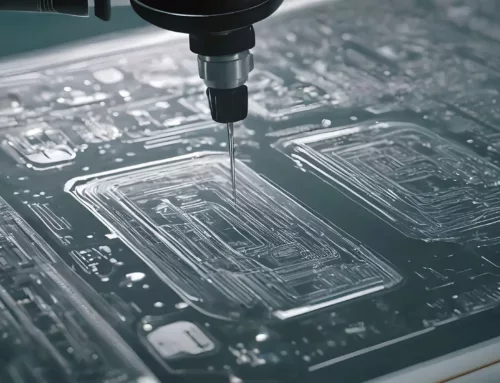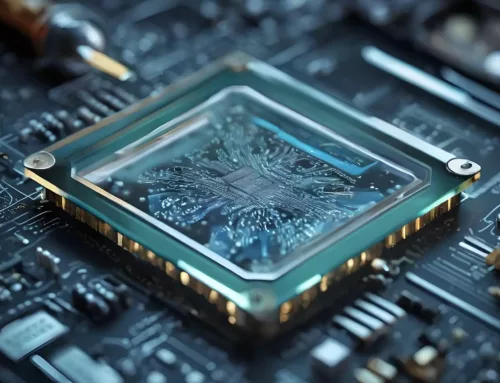
In the world of pharmaceuticals, agglomeration stands as a central and foundational process, serving the critical purpose of achieving more control over the characteristics of drug particles and ensuring stable formulation consistency. It transcends being a mere manufacturing step. It is the cornerstone upon which the safety, efficacy, and long-term stability of pharmaceutical products are built. Therefore pharmaceuticals represent a field where precision is non-negotiable. Every aspect of drug development, from the initial formulation to the final dosage form, requires meticulous attention to detail. Here agglomeration has shown itself as a key player in this intricate symphony, allowing pharmaceutical manufacturers to exercise absolute control over particle size, shape, and distribution. Such control is essential in guaranteeing that each pill, capsule, or injection consistently delivers the exact dose of active ingredient needed for therapeutic efficacy.
In essence, agglomeration is the guardian of content uniformity. It ensures that active pharmaceutical ingredients (APIs) and excipients are seamlessly blended, minimizing the risk of dose variability. In an arena where even the slightest deviation can have profound consequences on patient health, content uniformity is not merely a goal; it’s a regulatory necessity.
The Need for Agglomeration
Agglomeration is an essential process in pharmaceutical manufacturing, driven by the need for precise control over critical parameters within pharmaceutical formulations. This includes aspects such as particle size, flowability, and dissolution rate, all of which have a direct impact on the effectiveness and safety of pharmaceutical products. Beyond the precision of drug dosage, agglomeration assumes a pivotal role in designing the release profiles of drugs. It exerts influence over the pace at which drug particles dissolve, thereby forming the kinetics of drug release and, subsequently, its bioavailability. This degree of control gives pharmaceutical researchers the capability to tailor formulations with precision, adeptly meeting the distinct therapeutic needs of each medication, whether it be for immediate-release drugs or those meticulously engineered for sustained, controlled delivery.
One of agglomeration’s fundamental functions is the enhancement of flow properties. Through this transformative process, it metamorphoses fine, cohesive powders into free-flowing granules—a transformation of paramount importance for accurate dosing during subsequent manufacturing phases like tablet compression and capsule filling. By ensuring improved flow properties, agglomeration maintains the steadiness and dependability of the manufacturing process.
Agglomeration also assumes an important role in elevating content uniformity. Through the creation of agglomerates. This guarantees the consistent distribution of active pharmaceutical ingredients (APIs) and excipients within the granules, effectively minimizing variations in dosage. This is not merely a matter of dosage accuracy but is also a prerequisite for compliance with stringent regulatory standards, which have to be upheld in the pharmaceutical field. In addition to content uniformity and dosage precision, agglomeration affords precise control over release profiles. By influencing the dissolution rate of drug particles, agglomeration takes charge of drug release kinetics and, consequently, bioavailability. This heightened control paves the way for fine-tuning drug formulations to align with specific therapeutic requirements, be it rapid-release formulations or those meticulously designed for prolonged, controlled delivery.
Finally, the need for agglomeration proves itself as a guardian of safety and hygiene within pharmaceutical facilities. It reduces dust generation—a characteristic inherent in fine powders, which can pose significant health risks to operators and elevate the likelihood of cross-contamination within pharmaceutical manufacturing spaces. Through the creation of larger, cohesive granules, agglomeration effectively mitigates these concerns, thereby fostering a workplace culture that prioritizes safety while upholding the integrity of pharmaceutical products.
Wet Granulation
Wet granulation stands as a fundamental and extensively employed agglomeration technique during pharmaceutical manufacturing. It is crucial for shaping cohesive powders into manageable granules. The process entails a series of well-defined steps and relies on specialized equipment designed to induce particle bonding through controlled mixing, shear forces, and fluidization. Among the equipment used are high-shear mixers, fluid-bed granulators, and planetary mixers, all of which play important roles in the processes.
Wet granulation finds its niche with powders that possess cohesive characteristics, often lacking the ability to readily flow on their own. These powders can be challenging to work with directly in pharmaceutical formulations. Wet granulation effectively addresses this challenge by not only enhancing flowability but also by breaking up agglomerates present within the powder blend and creating new, larger agglomerates during the granulation process.
The fundamental stages of wet granulation form a well-coordinated process that is central to pharmaceutical manufacturing. This complex procedure transforms cohesive powders into manageable and homogenous granules. To begin, the blending stage initiates the process by meticulously mixing active pharmaceutical ingredients (API) and excipients, ensuring the formation of a uniformly blended powder mixture. This homogeneity is crucial, as it sets the foundation for the subsequent steps, guaranteeing that each granule will possess consistent properties. Following blending, the stage of binder addition continues. A liquid binder, typically water or an alcohol-based solution, is applied to the powder blend. The binder acts as the catalyst, initiating adhesion among the individual powder particles. As it wets the particles, it sets the wheels in motion for granule formation.
The core of wet granulation lies in the agitation and impaction phase. This stage unfolds within a specialized granulator where the wet mass is subjected to vigorous agitation. As the particles collide within this dynamic environment, adhesive forces come into play, leading to the formation of agglomerates. These agglomerates serve as the building blocks for the granules and are essential in creating cohesive, well-structured final products. To complete the process, the wet granules undergo a thorough drying phase. Moisture, introduced during the binder addition and agglomeration stages, is removed during drying to ensure the granules achieve the desired characteristics. This critical drying step results in free-flowing and stable granules, ready for the subsequent phases of pharmaceutical formulation. The synergy between equipment, blending, binder addition, agitation, and drying is essential in ensuring the production of granules that exhibit uniformity, desired properties, and exceptional performance in pharmaceutical formulations.
Dry Granulation
Dry granulation, also known as roller compaction, serves as a vital agglomeration method within pharmaceutical manufacturing, providing a distinct alternative for specific applications. This approach employs specialized equipment like roller compactors or chilsonators for compaction and oscillating or conical mills for milling, enabling agglomeration without the need for liquid binders. The applicability of dry granulation largely depends on the inherent characteristics of the powder in question. It shines when dealing with powders sensitive to moisture or those requiring enhanced flowability, making it especially valuable when working with moisture-sensitive active pharmaceutical ingredients (APIs) where liquid binders must be avoided.
The dry granulation process is composed of a series of steps that also play a role in pharmaceutical production. It begins with compaction, where a precisely blended powder is introduced between two counter-rotating rolls. Within the narrow gap between these rolls, a substantial force is applied, leading to high-pressure compaction. This process effectively transforms the initially loose powder into dense, compacted flakes. This stage is not only about compression but also about ensuring the uniformity of the compacted material, a fundamental aspect of producing consistent and high-quality granules. Following compaction, the compacted flakes undergo a rigorous milling phase. This step is where the granule formation takes shape. The compacted flakes are carefully crushed and milled to break down into smaller, uniform particles. The degree of milling control ensures that the resulting agglomerates maintain a precise size, density, and structural integrity. This stage is critical for achieving the desired physical and chemical properties in the final granules, which directly impact the performance of the pharmaceutical product.
The final step, screening, is equally exacting. It involves the thorough examination and separation of granules to eliminate any fines or oversized particles. The screening process ensures that the particle size distribution remains consistent, which is paramount in pharmaceutical formulations. This consistency is vital for dosing accuracy, drug release profiles, and overall product quality. These granules are not just building blocks; they are the foundation upon which certain pharmaceutical formulations rely, underscoring the importance of a methodical and detailed approach throughout the process.
Fluidized Bed Granulation a Combination Technique
Fluidized bed granulation is a highly versatile and precise method employed in the pharmaceutical industry to meticulously control agglomerate size and attain uniform granules, which is yet another essential aspect of drug formulation. This sophisticated technique amalgamates the principles of both wet and dry granulation, offering a comprehensive approach to granule production. At its core, fluidized bed granulation begins with the creation of a powder bed formation. Here, a bed of dry powder is transformed into a dynamic, fluidized state by a continuous stream of air. This foundational step sets the stage for subsequent processes.
The next stage involves binder spray, where a liquid binder is sprayed onto the fluidized powder. This application results in the formation of cohesive agglomerates, each with carefully controlled properties. The binder plays an important role in determining the final characteristics of the granules, such as their size, density, and dissolution rate. Following the binder application, the process proceeds to the drying phase. Within the fluidized bed environment, the wet granules are subjected to controlled drying conditions. This stage ensures the removal of moisture and the consolidation of the agglomerates, leading to the desired granule attributes.
A notable advantage of this technique is its continuous fines removal mechanism. Throughout the process, fine particles are consistently eliminated, contributing to the uniformity and quality of the final granules. Fluidized bed granulation stands as a sophisticated and multifaceted method that combines the principles of wet and dry granulation to achieve precise control over agglomerate size and granule uniformity, making it an invaluable tool in the pharmaceutical industry’s pursuit of formulation excellence.
The Significance
The significance of agglomeration in pharmaceuticals cannot be overstated. It serves as one of the foundational phenomena central to ensuring precision, uniformity, and safety in drug formulations. As pharmaceutical research continues to advance, one can only imagine the potential for AI-driven advancements in agglomeration techniques. The future promises even greater control and efficiency in the agglomeration process. With AI’s analytical capabilities and real-time adjustments, we can anticipate pharmaceuticals reaching new heights of precision and quality. This convergence of science and technology holds the potential to unlock innovative approaches and bring about groundbreaking changes in the pharmaceutical industry. As we continue on this exciting journey, the pursuit of excellence in agglomeration remains at the forefront of ensuring safer, more effective, and more consistent pharmaceutical products, ultimately benefiting the health and well-being of patients worldwide.




